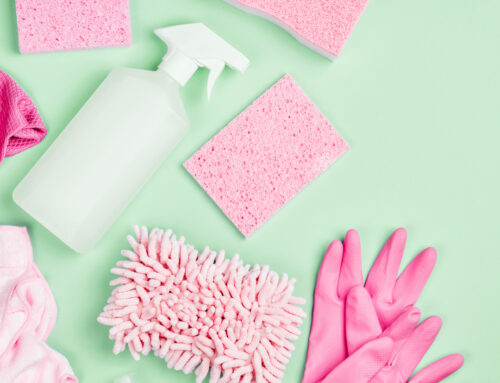When it comes to keeping your home clean and fresh, one important aspect to consider is the proper cleaning and care of different fabric types. From furniture upholstery to bedding and curtains, each fabric type requires specific cleaning techniques to maintain their appearance and longevity. In this blog post, we’ll cover some essential tips for properly cleaning and caring for different fabric types in your home.
Cotton
Cotton is one of the most popular and practical fabric types due to its versatility and durability. Whether it’s a cozy cotton blanket or your favorite pair of cotton pajamas, taking proper care of your cotton items is essential to maintain their appearance and longevity.
When it comes to washing cotton items, it’s important to use a gentle detergent and cold water. Harsh detergents or hot water can cause the fibers to break down and can lead to shrinkage or damage to the fabric. Using cold water helps to preserve the integrity of the cotton fibers, ensuring that your cotton items last for many washes to come.
When it comes to drying cotton items, it’s best to avoid using high heat. The heat from the dryer can cause the fabric to shrink or become misshapen. Instead, opt for a lower heat setting or air dry your cotton items by hanging them up. This will help to prevent any damage to the fibers and ensure that your cotton items stay looking and feeling their best.
In addition to these tips, it’s also important to separate your cotton items by color when washing. This will help to prevent any color bleeding or staining, and ensure that your items stay looking bright and fresh.
Wool
Wool is a wonderful fabric that is often used in cozy blankets, rugs, and clothing to keep us warm and toasty during colder months. However, caring for wool requires a little more attention and care than other fabrics due to its unique properties.
When it comes to cleaning wool, it’s important to use a gentle, wool-specific detergent and cold water. Wool fibers are delicate and can easily become damaged, so using a harsh detergent or hot water can cause the fibers to shrink or become misshapen. By using a gentle detergent specifically designed for wool, you can effectively clean your wool items while keeping them in excellent condition.
It’s also important to avoid using a dryer or hot water when cleaning wool items. Wool can easily felt or shrink when exposed to high temperatures, so air drying your wool items is the best option. To dry your wool items, lay them flat on a towel or drying rack and gently reshape them as they dry. This will help to prevent any damage to the fibers and ensure that your wool items stay looking and feeling great.
In addition to these tips, it’s also important to avoid rubbing or agitating wool items when cleaning. This can cause the fibers to become tangled and damaged, leading to pilling or shedding. Instead, gently soak and squeeze the wool items to remove any dirt or debris.
Silk
Silk is a delicate and luxurious fabric that can add a touch of elegance and sophistication to any home. However, caring for silk requires special attention and care to keep it looking and feeling its best.
When it comes to cleaning silk, it’s important to use a gentle, silk-specific detergent and cold water. Silk fibers are delicate and can easily become damaged, so using a harsh detergent or hot water can cause the fibers to shrink, lose their luster, or become misshapen. By using a gentle detergent specifically designed for silk, you can effectively clean your silk items while keeping them in excellent condition.
It’s also important to avoid wringing or twisting the fabric when cleaning silk items. This can cause the fibers to become tangled and damaged, leading to a loss of luster or even tearing. Instead, gently soak the silk item in cold water with the gentle detergent, and then rinse it thoroughly.
After washing, it’s best to lay the silk item flat to dry. Avoid wringing or twisting the fabric, as this can cause damage to the fibers. Instead, gently press out any excess water and lay the silk item on a clean towel or drying rack to air dry. This will help to prevent any damage to the fibers and ensure that your silk items stay looking and feeling great.
Linen
Linen is a versatile and stylish fabric that can add a touch of elegance to any home. Whether it’s a crisp tablecloth or a soft and airy set of bedding, linen is a popular choice for its durability and timeless appeal.
When it comes to cleaning linen, it’s important to use a gentle detergent and cold water to prevent damage to the fibers. Avoid using bleach or fabric softeners, as these can cause discoloration or damage to the fabric. Instead, opt for a mild detergent that is gentle on linen fibers.
It’s also important to be careful when drying linen items. While it may be tempting to toss them in the dryer, this can cause shrinkage and damage to the fibers. Instead, hang your linen items to dry. This will help to prevent shrinkage and maintain the fabric’s shape and texture.
One tip for caring for linen is to wash it before the first use. This can help to soften the fabric and remove any excess dye or finishing chemicals. It’s also a good idea to avoid using harsh or abrasive detergents or bleaches, as these can cause the fibers to become brittle and break over time.
Synthetic Fabrics
Synthetic fabrics are a popular choice for their affordability and durability. Whether it’s a stylish set of curtains or a comfortable sofa, synthetic fabrics like polyester and nylon are commonly used for furniture upholstery and home decor items.
When cleaning synthetic fabrics, it’s important to use a gentle detergent and cool water to prevent damage to the fibers. Avoid using hot water, which can cause the fibers to melt or become distorted. Additionally, it’s best to avoid using bleach or fabric softeners, as these can damage the fibers and cause discoloration.
When it comes to drying synthetic fabrics, it’s important to use low heat or air-dry them to prevent shrinkage or damage to the fibers. Avoid using high heat or tumble drying, as this can cause the fabric to melt or become misshapen.
One tip for caring for synthetic fabrics is to spot-clean them as soon as possible after a spill or stain occurs. Use a clean cloth and a mild detergent to gently remove the stain, and avoid scrubbing too hard, which can damage the fibers.
With proper care and attention, synthetic fabrics can last for years and continue to look great in your home. So whether it’s a set of stylish curtains or a cozy sofa, taking the time to care for your synthetic fabric items can help to ensure that they stay looking and feeling their best for years to come.
In addition to these tips…
it’s important to always check the care label on your fabric items before cleaning. This will give you specific instructions on how to properly care for the fabric and ensure that you avoid any damage.
By properly cleaning and caring for different fabric types in your home, you can extend the life of your favorite items and keep your home looking and feeling fresh and clean. With these tips in mind, you’ll be a fabric care pro in no time!





